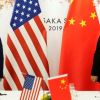
On the occasion of the first meeting of the African Economic Platform, hosted by Mauritius last March, there was a lot of hype about a promising future for Africa. Economic growth rates on the continent may look impressive, but the level of output is so low that any increase is viewed as a great leap forward. Also, the shift from subsistence economy to market economy provides statistical coverage in remote areas which were unaccounted for in national accounts. Statistics should therefore be taken with a pinch of salt, the more so as there are few African countries like Mauritius which can readily supply reliable national data.
Publicité
Notwithstanding that, in its World Economic Outlook dated April 2017, the International Monetary Fund foresees only “a modest recovery” in sub-Saharan Africa with growth projected to rise to 2.6 per cent in 2017 after 1.4 per cent last year. Growth forecast for South Africa, the so-called economic giant in Africa, is 0.8 per cent, just slightly higher than the 0.3 per cent of 2016. No doubt it will be revised downwards following Jacob Zuma's Cabinet reshuffle, which has prompted Standard & Poor’s to downgrade the country's credit grade to junk status, for political uncertainty is putting fiscal and growth outcomes at risk.
The challenge before us is to turn these threats into opportunities. As a conflict-free country, Mauritius has been especially attractive to wealthy South Africans, who are among the largest buyers of the non-citizen property schemes. AfrAsia Bank estimates that 280 South African millionaires have moved to the island since 2006. The setting up of corporations in Mauritius seen as the gateway to Africa further supports the property market. While it is becoming an economic pillar, the real estate sector cannot however be at the core of a small island developing economy because it does not sustain much value addition.
Trade instead is a better generator of wealth that can trickle down into tangible economic benefits for the population at large. Of course, we must trade what we produce, and international trade relates to the production of services as much as to that of goods. Mauritius’ merchandise trade with African countries remains subdued in so far as it is hampered by non-tariff barriers, regulatory bottlenecks and physical infrastructure constraints. Market access is even difficult to South Africa, which brings the president of the South African Chamber of Commerce, Richard Robinson, to say that “what is however possible is for Mauritius to concentrate on developing its service industry, for instance ICT and education sectors, and naturally expanding its financial services to Corporate South Africa”.
Yet, there are no tariff barriers within the Southern African Development Community and the Common Market for Eastern and Southern Africa, both of which Mauritius is a member. The island will also join the COMESA-EAC-SADC Tripartite Free Trade Area which comprises the East African Community. These three regional economic communities stretch from Cape Town to Cairo, creating an integrated market with a combined population of 625 million people and a total gross domestic product of 900 million dollars. Mauritian exporters need not target a wide clientele but would do better to focus on the middle class segment. The latter represents across the African continent nearly 350 million consumers.
Indeed, Africa should be viewed more as a consumer market than as a manufacturing base. Africans buy foreign products with the money that they receive from Asians in exchange for their land and raw materials. What make the continent an attraction are its wealth of untapped natural resources and minerals, and its arable agricultural land that can be exploited. Its production structure is made up mostly of resource extraction processes and of final consumer goods and services. The sectors that prosper are those of higher order goods, distant from the consumer (mining, farming and agriculture), and of lower order goods, nearest the consumer (distribution and services), but diversified manufacturing is missing in between. Even in South Africa, where labour unrest deters new investment, the manufacturing industry is shrinking while foreign retailers have come in droves. The Africa story is one of an economy industrialised near the wholesale and retail activities thanks to a booming consumer market.
It is no coincidence that very few Mauritian industry captains have ventured into manufacturing on the continent. Some rare examples are provided by Alteo involved in sugar production in Tanzania, and by Innodis engaged in poultry production in Mozambique. Meanwhile, Mauritian banks with a regional footing are doing good business in trade finance. They will continue making profits on the coattails of debt financing.
African economies are being driven by high debt-financed public and private consumption spending as savings are poor with interest rates kept artificially low by foreign capital inflows. Bond yields have fallen, inducing debt-financed infrastructure investment. Weak savings rates, which have led to a lack of capital accumulation, explain why capital goods producing (intermediate) sectors are so undeveloped. Savings efforts have been frustrated by irresponsible government deficit spending, money printing, currency debasement, runaway inflation, negative real interest rates and easy bank credit facilities.
Thus a debt bubble is forming, setting in motion a boom-bust cycle. The economic consequences will be dire unless Africans reduce their consumer spending and start saving right now. Mauritians should do the same and invest in production processes rather than in shopping malls.

Notre service WhatsApp. Vous êtes témoins d`un événement d`actualité ou d`une scène insolite? Envoyez-nous vos photos ou vidéos sur le 5 259 82 00 !

















![[Blog] Maurice à la Croisée des Cieux - Vers une Politique Open Sky pour relancer le Tourisme, l’Aviation et l’Économie»](https://defimedia.info/sites/default/files/styles/square_thumbnail/public/170425_tourist.jpg?itok=Rc-UGYCU)



